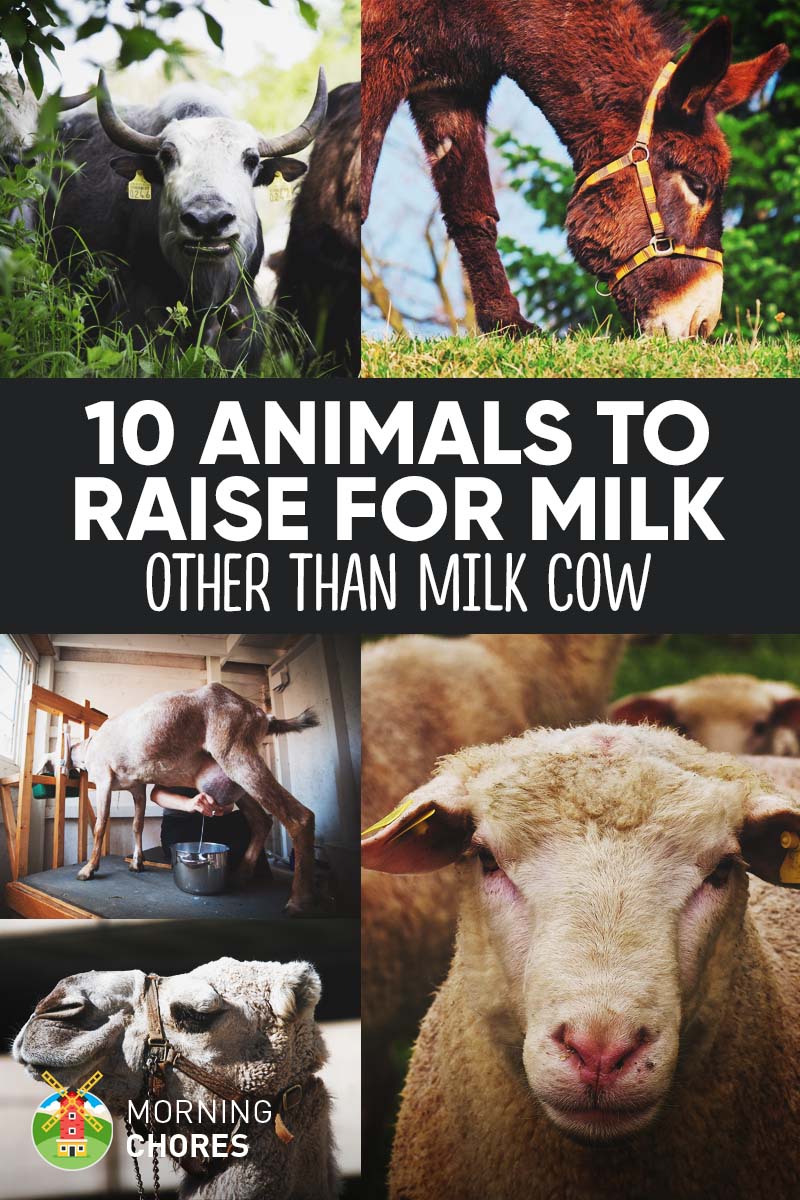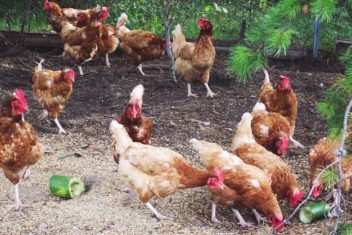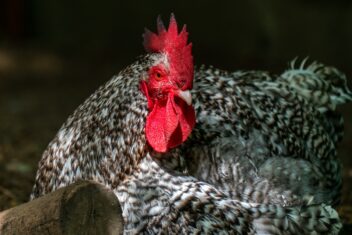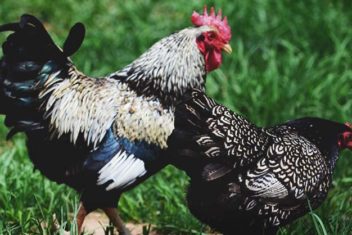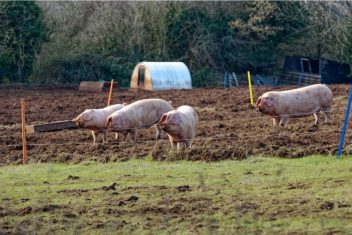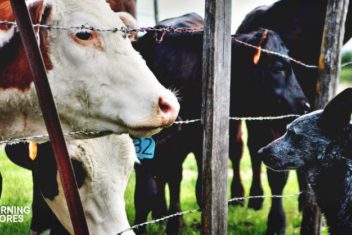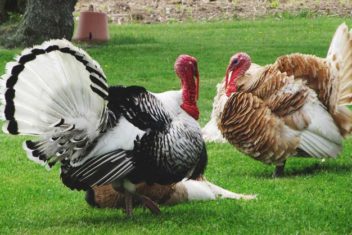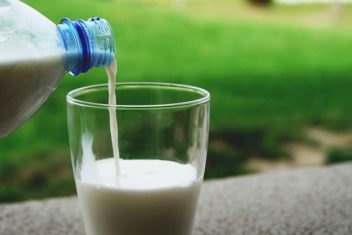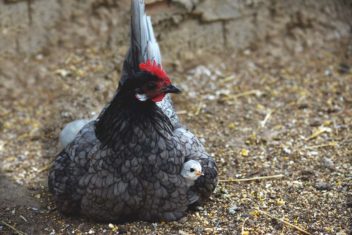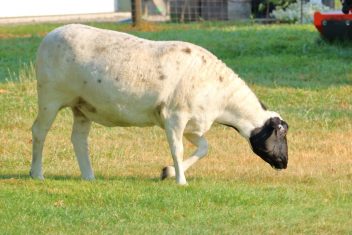When I first began homesteading I had all of these thoughts of milking daily and making my own cheese. I do these things, just not in the way I had imagined.
You see, I thought if I ever lived this life I would need to have a cow. A big, fat traditional cow.
Yet, when we ended up farming on a smaller amount of acreage, I knew that a traditional dairy cow was out. The reason is that they require so much room to graze.
Now, don’t get me wrong. I’ve seriously considered buying hay and throwing a cow out in my front yard. Thankfully, my husband has talked me out of that idea a few times.
However, I want to share with you a few alternative dairy options. Not all of them will be suitable for a small scale homesteader, but they are interesting none the less.
Also, some of these options for milk animals are common in different parts of the world.
So keep an open mind as we explore the list of milk animals.
1. Small Breed Dairy Cow
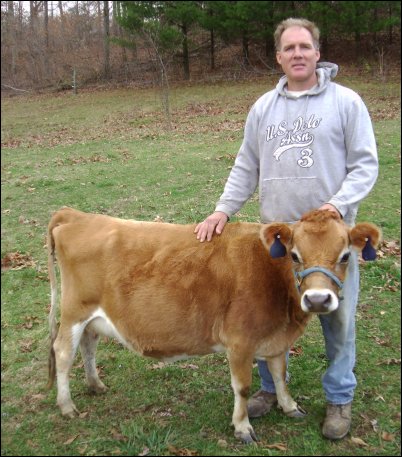
These are not cheap options, but I have considered them in years past. They actually make a breed of dairy cow that is known as a micro-miniature. This means that they are 36-inches in height and under, but don’t let their small size fool you.
Though they are smaller breeds, they still give around a gallon each milking session. They do require room to forage and graze but are obviously much more manageable than a full-sized cow.
However, this still means that each cow would need a half-acre to an acre to be fully sustained on your land.
If you have room on your property and in your budget to purchase one of these small cows, it might be a wise investment.
2. Camels
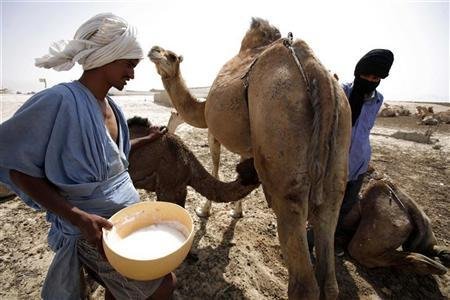
When I first saw this I thought, “What?” However, think about it. In other parts of the world where they don’t have the grazing options, they have to find milk from an animal that can sustain itself in really hot weather.
Why not the camel? It is a very resilient animal and depending upon the breed, you can get anywhere from 5-40 liters of milk per day.
However, you might be thinking, “Is this realistic for me?”
Well, not if you live on a small scale farm like myself. Camels actually need 2-acres of land per camel.
However, you can make quite a bit of money off of owning a camel, and you don’t need to live in a really warm climate.
When I was growing up, my grandparents lived in Kentucky. Sure enough, there was a farm up the road from them that owned camels.
So if you’d like a different dairy source and have the room, you might consider owning a camel.
3. Horses
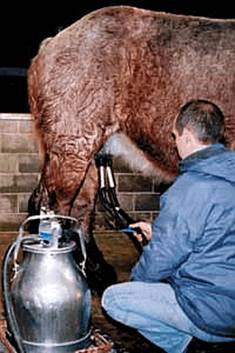
Maybe you want dairy from your homestead, but you don’t have the funds to invest in a dairy cow. However, you already raise horses.
Well, if you can get past the stigma that we ‘only drink cow’s milk’ then drinking horse milk might be an option for you. It is something that is practiced in Central Asia. People don’t always have the means to support a variety of livestock so they make do with what they have.
Again, this may not be a suitable option for a milk animal for everyone, but if you are feeling adventurous and want to make-do until you can afford to buy a dairy cow, then you might like the idea of utilizing your horses for more than just riding.
4. Yaks
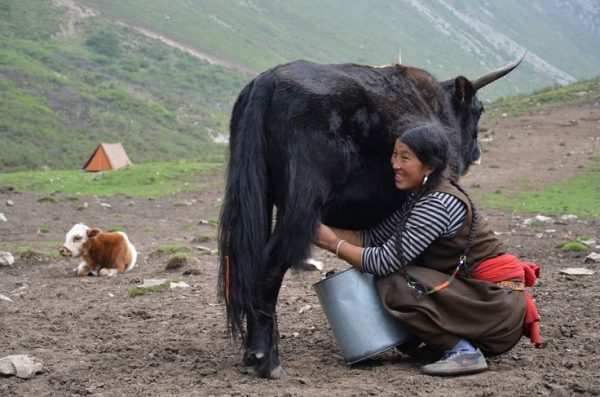
In parts of the world where people live in very high mountainous areas, they raise yaks for dairy. Their milk is very rich and considered quite a delicacy in most parts of the world.
According to my research, most areas do not require you to have a special permit to raise yaks. They are actually considered domesticated animals. They are also great for bringing a profit to your homestead.
Just in case you were curious, people love their meat because of how lean it is. It is a red meat source as well. Yaks also bring a lot of money for their skin. People make nice robes out of them.
However, one of the greatest things about raising a yak is that they are quieter than a dairy cow. Instead of mooing, they simply grunt.
If you have the space to raise a herd of yaks, then you might want to consider it. Some people actually claim that they are the substitute Bovine.
5. Buffaloes
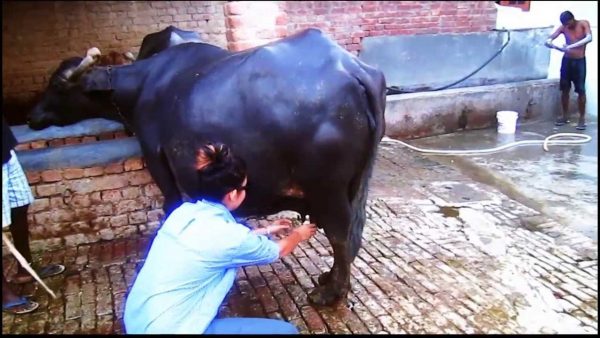
Growing up, there was this great little restaurant near our home that served buffalo burgers. At first, the idea of eating a buffalo burger kind of freaked me out.
However, after I tried it, I still think it was the tastiest burger I had ever eaten.
Still, did you know that buffalos are also raised as a dairy source? I know, getting past some of these stigmas is tough. Still, what if you’d like to raise a meat and dairy product in one that is different from a cow?
Why shouldn’t you consider the buffalo? Not to mention, their milk makes exquisite cheeses because of the high-fat content.
Also, water buffalo are great beyond just meat and dairy. They are slow-moving animals, but they are also very sturdy which makes them great for riding and using around the homestead.
If you have the land and just don’t want to invest in cattle, then you might want to give buffalo a thought.
6. Donkeys
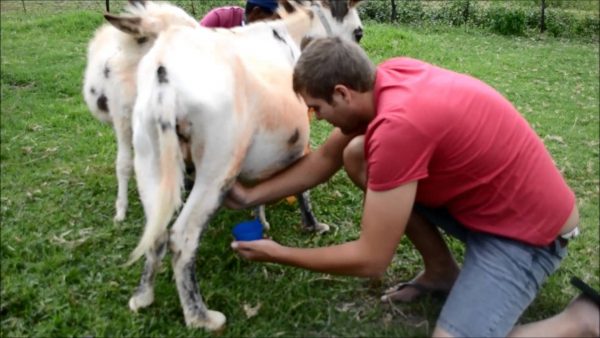
If you ask me, donkeys are truly amazing creatures. They are wonderful livestock protectors and very functional animals around a homestead.
However, have you ever considered keeping them for dairy too? It might not be the most common type of milk, but there are countries around the world that only have this type of milk so they use it.
Well, if you’d like dairy and only have a donkey then you might want to consider giving it a try. The truly interesting thing about donkey’s milk is that it is easier to digest than other types of milk.
Also, it is very close to human milk so many people with milk allergies can digest this type of milk. It is also great for cooking purposes, too.
If you have a donkey, before you go into debt for a milk cow, consider giving their milk a try.
7. Sheep
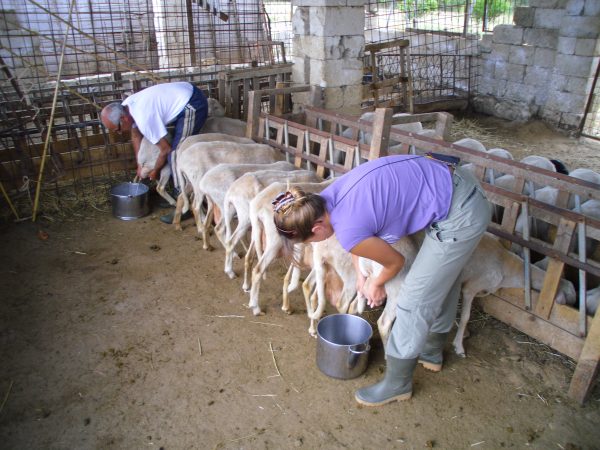
I’m seriously considering adding sheep to our homestead. Their meat is wonderful, their personalities are great, and you can also use them for milk.
Now, sheep are quite common for dairy usage throughout the world. Actually, they were used for milk long before cows even were.
And their milk is a lot more nutritious than cow’s milk too. It has more vitamins, calcium, phosphorus, potassium, and magnesium than cow’s milk.
So if you like the idea of raising a smaller, multipurpose animal that can also provide healthier milk then you might want to consider sheep.
Plus, if you are shorter on land then sheep might be a good option for you. The reason is that 6 sheep can easily fit on an acre of land. This means you could easily fit a small number of sheep on a small to medium-sized homestead.
8. Nubian Goats
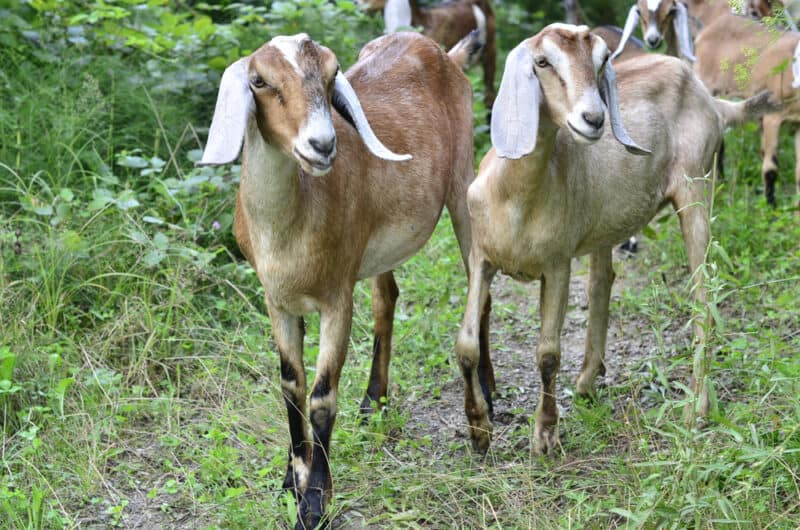
A Nubian goat is another addition that is coming soon to our homestead. The reason is that they are actual dairy goats. Their milk is deemed to be the closest to cow’s milk.
However, goat’s milk is easier to digest just like donkey milk. So if you have an allergy to regular cow’s milk, you might be able to handle goat’s milk.
A Nubian goat will give approximately 1-gallon of milk a day and has around 4-5% in butterfat. Plus, Nubians are always noted for the sweet taste that their milk contains.
This means, if you don’t have room for a cow then you might very well have room for a Nubian goat on your homestead. Then you can have all of the milk your family could possibly need.
9. Boer Goats
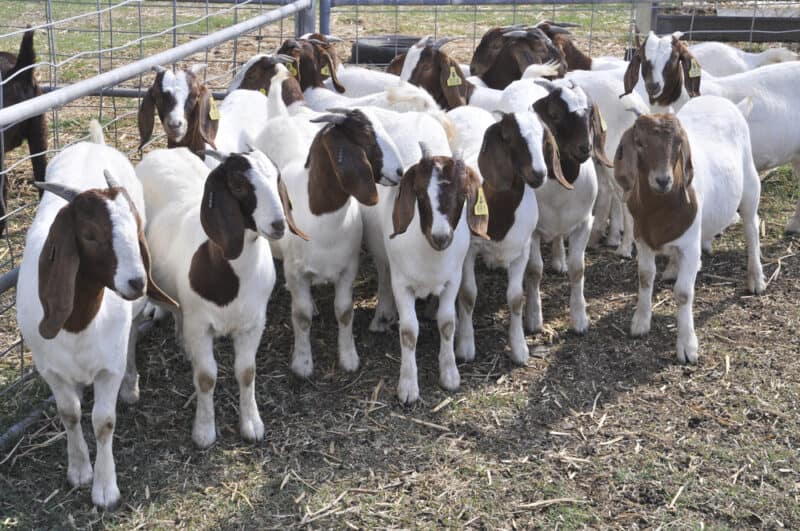
I have a Boer goat. She is wonderful and very sweet.
However, when I first bought goats I knew I didn’t want to invest a lot of money in them because I was new to raising them.
I got a great deal on her, and I thought I’d try to milk her.
Now, people thought I was nuts because everyone told me I couldn’t milk a non-dairy breed of a goat. Even so, stubborn me showed them otherwise.
The first time she kidded she gave us twins and made an ample amount of milk to support them and us. The average for a Boer goat is about 4.4 pounds of milk a day.
As far as ease of milking, she had a huge bag and her udders were a good size to make milking easy.
If you can’t afford a Nubian but find a cheaper goat, then go for it. It is still a functional way to get milk, at least in my own experience.
10. Pygmy Goats
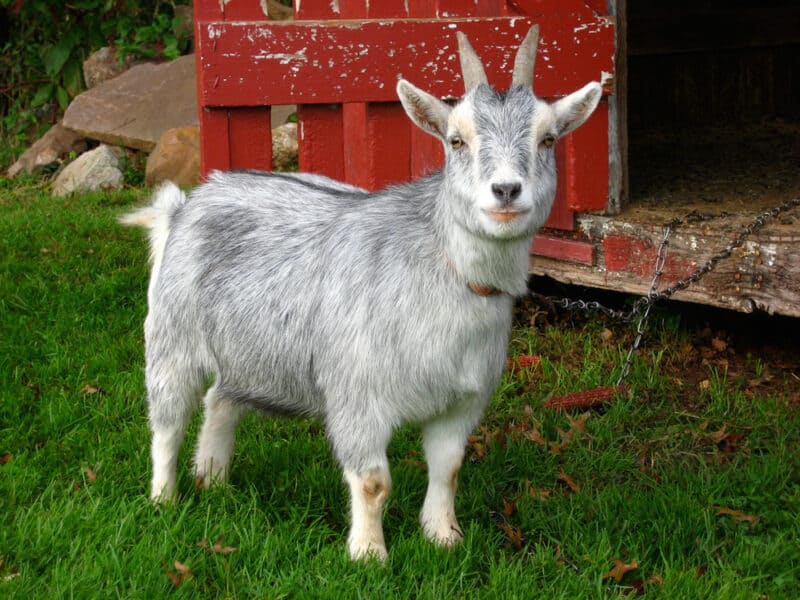
I had a lady laugh at me when I told her I have a Pygmy goat for milk. She told me there was no way we could milk them. That their udders were too small.
Well, let me tell you, you can milk a Pygmy goat. Our Pygmy was our very first goat. She is my absolute favorite, and I hope to have more of them in the future.
Their demeanors are so great, and they are also so easy to handle because of their small stature.
However, don’t let their small stature fool you. Our Pygmy delivered 3 babies her first time kidding.
Plus, she gave us an ample amount of milk and was easier to milk because of her demeanor.
On average a Pygmy goat can produce around a quart of milk per day, but what I love most about goats is that their milk is easier to digest and you don’t have to worry about over milking.
They actually have a way of withholding the milk their babies need. That was a huge relief. You’ll just need to be sure that you don’t milk a goat within 2 months of her kidding (if you are freshening her milk supply) in order for her to store up needed nutrients for the kids.
Well, there you have it, folks. If you have been stuck in a dairy rut and weren’t quite sure where to turn for some unique or smaller options for dairy, well, now you know that you have choices.
Remember, not all of these are common in some corners of the world, but they are practiced in others.
Just do a little research to see which option for a milk animal you think might work best for you. Also, be aware of the animal’s needs before jumping into it.
